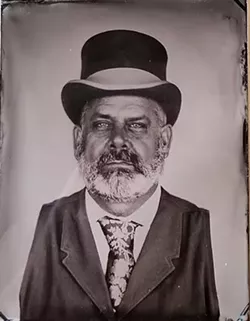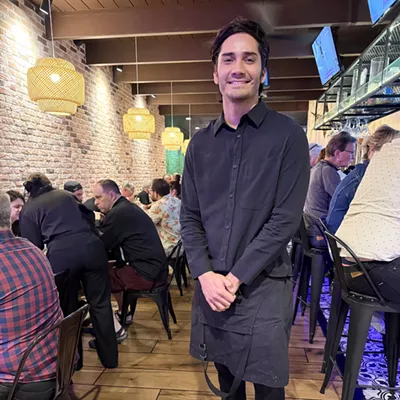Most images of an Old West saloon are barroom brawls and gunfire, with scantily clad “soiled doves” hanging around.
Not according to archeologist and historian Homer Thiel, who has extensively researched the saloons of territorial Tucson.
“There was less crime,” he said. “There were some fights, of course, usually over people being caught cheating. There were a few murders that took place in saloons.”
Find out about Tucson’s old-timey saloons at Thiel’s “Saloons of Territorial Tucson” at 1 p.m. Sunday, Nov. 17, at JoJo’s Restaurant.
About 10 years ago, Thiel looked into saloon sites Downtown, the current location of the Martin Luther King apartment, across from Hotel Congress.
His work covers saloons from about 1860 to 1914. For a short time, the city had 20 saloons, mostly on Congress Street and what is now Broadway Boulevard. Many of the saloon keepers were from Italy and what is now Czechoslovakia.
“They would tend to come to town and then bring their relatives over,” Thiel said. “(The relatives) would help out in the saloons or open up new ones. A lot of the staff included both Mexican Americans and African Americans.”
Typically, Thiel learned that saloons’ lifespans are about one to two years. Unlike bars and restaurants today, it didn’t require a lot of investment to open.
“You just needed a bar, shelves behind it, a table and a couple of chairs and alcohol,” he said.
In early Territorial Days, a saloon owner did not need a license. That came later and it was expensive. Some saloons did actually look like what we imagine. They were elaborately decorated with wallpaper, paintings and prints of half-naked ladies. That is until about 1890, when Tucson’s city council decided to clean things up.
“Women could not sing or perform music in saloons, so eventually they just banned any music,” Thiel said. “Period.”
Also, that image of Miss Kitty and her hoard is incorrect.
“(Women singers) were the only women they employed in the saloons,” Thiel added. “They never had barmaids, and there wasn’t any prostitution in the saloons either.”
However, that’s not to say patrons didn’t enjoy the company of women.
“One of the saloon owners had this machine where you crank the handle and you could watch sort of like a movie,” Thiel said.
“Apparently, it was a dirty movie and somebody found out about it. The police came and confiscated it and brought it to city hall and then the mayor and all of the city councilmen had to, one by one, watch the movie to declare it was obscene. They shut that one down.”
By the 1870s, freight wagons began bringing in items like billiard tables, enormous mirrors, glassware and thousands of bottles of various types of alcohol. At least two or three beer brewers were in Tucson, but port, sherry, wines of all types, spirits and cigars were brought in.
“Saloons were the primary source of entertainment for young men and single men in Tucson,” Thiel said. “Eventually, other things opened up. There were opera houses and an amusement park outside of Tucson, but saloons were an important place to go and socialize.”
“Saloons of Territorial Tucson,” a talk by archeologist and historian Homer Thiel
WHEN: 1 p.m. Sunday, Nov. 17
WHERE: The Monsoon Room at JoJo’s Restaurant, 76 W. Washington Street, Tucson
COST: $10, reservations requested
INFO: 520-622-0594, tucsonpresidio.com











